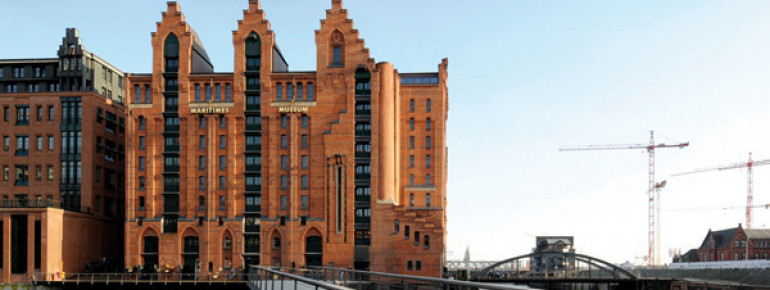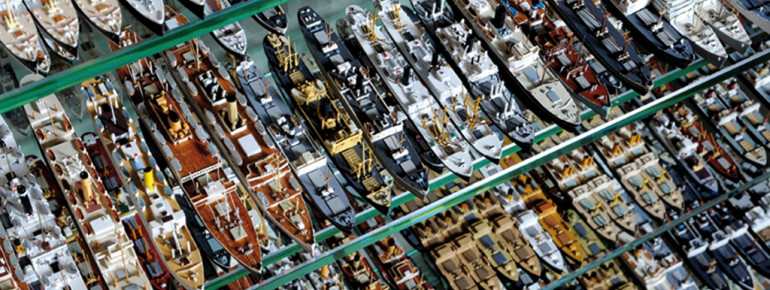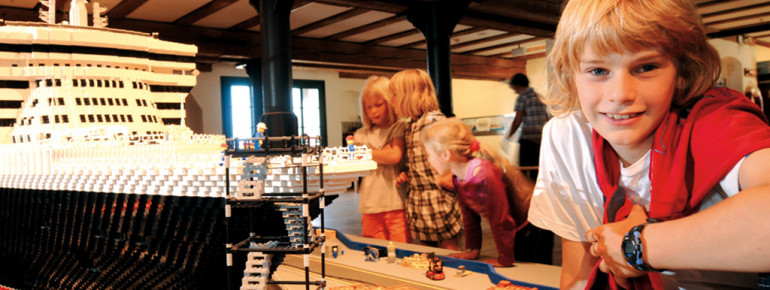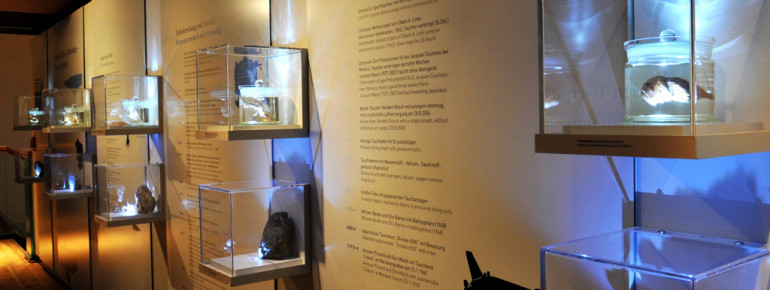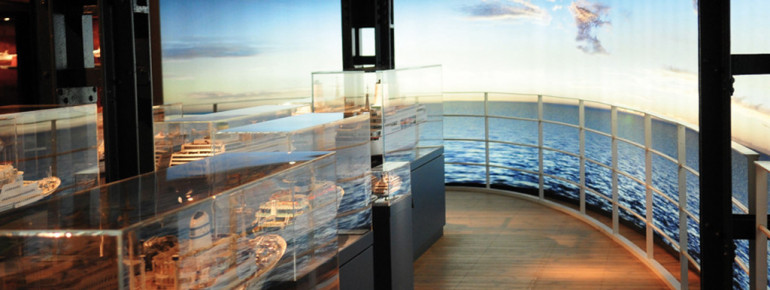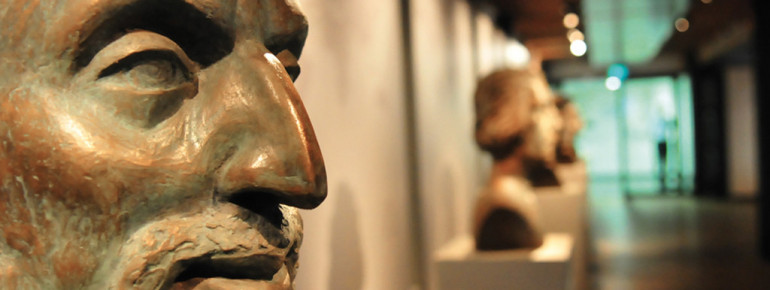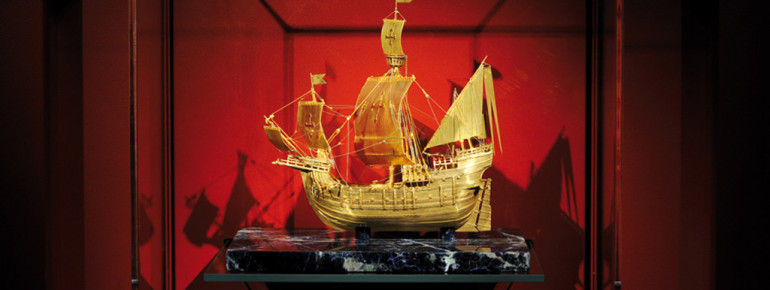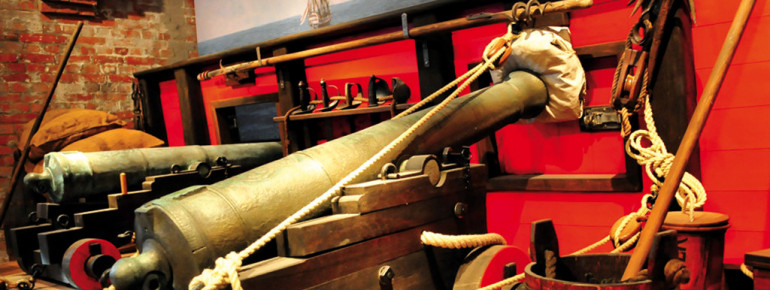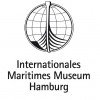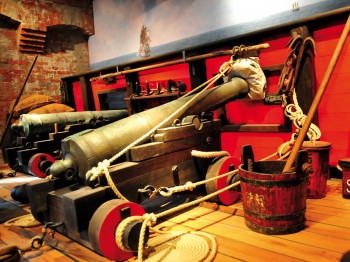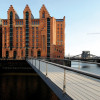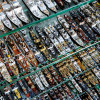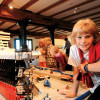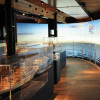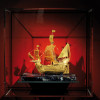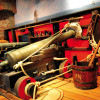Contents
Description
The International Maritime Museum in Hamburg, Germany is located inside the heritage-protected Kaispeicher B. Nine exhibition decks filled with precious samples, models, sea maps and paintings showcase a collection fed from 3,000 years of maritime history.
The largest private maritime collection in the world, it contains more than 40,000 models from various countries all over the world at a scale of 1:1250 and about 1 million photographs. Hand-painted compasses, golden sextants, morse transmitters and signal books are reminiscent of bygone times, when seafarers still had to set the course themselves. From the many boat and ship models shown in the museum, you can discover the development they took, not only in terms of technlology. The oldest exhibition sample of this kind that was excavated from Elbe river is a thousand-year old logboat. In addition, you find shining medals and chic uniforms from the heydays of seafaring exhibited here.
The Decks
Deck 1 is devoted to world exploration. Aided by means of navigation and communication, Columbus and Magellan hit the oceans of our world. You find Deck 2 decorated true to the motto “Let the wind take you around the world”. Seafaring is presented from its very beginnings up to the early 20th century. Carrying on to Deck 3, you'll learn interesting facts about the history of shipbuilding, starting with the crafting traditions of the ancient world and extending up to the modern way of shipbuilding with computer and laser technology. Deck 4, on the other hand, explains everything there is to know about service on board. Life on board was determined by hierarchical structures, hard work and strict rituals, complemented by uniforms, weapons, medals and badges.
One floor up, on Deck 5, you become acquainted with the history of the world marine from 1815 onwards. Fascinating samples tell you about the thin line which sometimes sets apart victory from defeat. Big events of world history and the destiny of individuals are highlighted as well. You continue learning more about modern seafaring, the advancements with trading and passenger shipping on Deck 6. Comparisons are drawn between modern-day ship loading and then. The exhibition of scientific institutes of maritime life is placed on Deck 7, delving into the deep with the “Expedition Ocean – The last secrets of Planet Earth”. When you make it to Deck 8, you will find it to be the treasure chest of the museum. Everywhere you look, there are ships made of gold, silver and amber as well as the worldwide unique collection of rare ships made from bones. On the very same deck, you get to see an impressive collection of paintings. Artwork by marine painters from the Netherlands, Great Britain, Scandinavia and Germany give you an insight into more than four hundred years of art history. Last but not least, Deck 9, takes you on a voyage to the big world of small ships. More than 40,000 models at a scale of 1:1250 make any collector's heart beat faster.
Oceanography
Developed in a joint venture with leading scientific institutes, maritime research remains a matter of current affairs. Theb oceonography exhibition is thus devoted to this topic. Various deep ocean films, objects from research boats and real underwater sounds help you delve into the world of oceans.
On an Expedition Through the Museum
If you feel like taking the lead, you may do so on “Tokyo Express”-Bridge. Aboard the navigation simulator (Deck 1), you may embark on a voyage of the extra class under an expert supervision of real captains, sailing the ports of Rotterdam, Singapore and Hamburg. Moreover, the museum offers several exciting tours giving you an overall overview. For this purpose, the tour “Das beste Stück – Die Höhepunkte des Museums” (“The best piece – The highlights of the museum”) is particularly recommended. Above all, it's kids and teenagers who love the tours through the museum. On this very tour, you have the chance to try out several nautical tasks, anything from dropping the anchor up to drawing.
Historical Information
The museum is accommodated in Hamburg's oldest preserved warehouse building, the “Kaispeicher B” which was built in style of brick Gothic in 1878/79. In 2007, then, large parts of the interior exhibition space were altered and modernised to allow an extension to 12,000 m² (1.2 ha). Efforts were undertaken to preserve as much as possible of the original fabric.
The International Maritime Museum Hamburg was officially opened in June 2008.
Interesting facts
- The day pass at International Maritime Museum Hamburg is €17 making it one of the 5 cheapest tourist Attractions in Hamburg.
How to get there
By car
If you travel to Hamburg by car, exit motorway A7 at the junction 37 – Horster Dreieck in the direction of Lübeck/ Berlin/ Hamburg and follow the signs leading towards Hamburg's city centre. Via Veddeler Brückenstraße B4 you reach Koreastraße, which is where you'll find the museum. Car parks can be found at the parking garage “Überseequartier”.
On public transport
The museum is only 15 minutes away from Hamburg's central station and just 10 minutes from the city hall. You may use the city's metro lines and buses. Either way, both will take you straight to the museum. Taking the U4, you leave at “Überseequartier” station. Using line 6, you get off at “St. Annen”. Should you be using bus line 111, you need to get off the bus at “Osakaallee”.
If you like to travel through Hamburg the fancy way, we recommend the Maritime Circle Line, the so-called “hop-on/ hop-off” launch that operates in St. Pauli daily from 10am and takes you on a boat tour through Hamburg's port of extravaganza and superlative.

